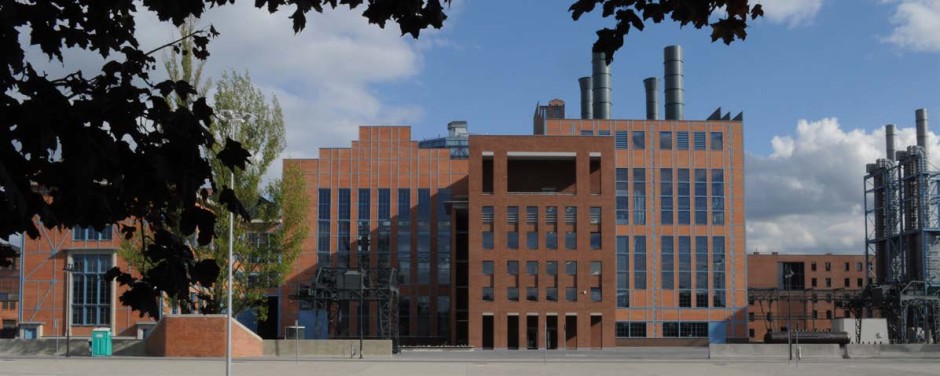Within the former EC-1 heat and power station complex, the renovation will involve three buildings refurbished for the new purposes:
- World Art Foundation Center– a multifunctional cultural center to be situated in the Lodz Power Plant Complex of 1907;
- An interactive Technology Museum of Lodz and Poland to be situated in the building of the New Center of 1929;
- Facilities of the Regional Citizen Television currently known as Media Window, to be situated in the former workshops of the Lodz Power Plant.
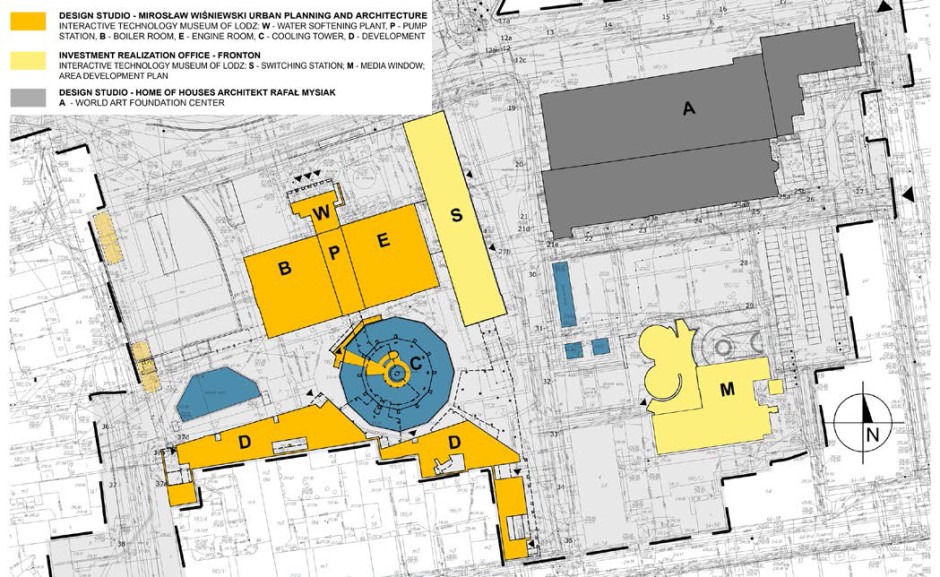
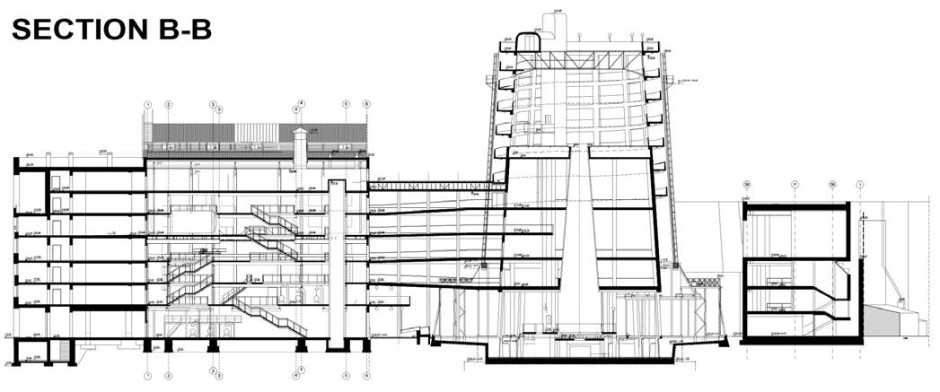
History of
the Project
The original construction of the building complex consisting of a boiler room, pump station, engine room, cooling tower and switching station, built in 1929. These buildings comprised the New Center of the Lodz Power Station, one of the three most modern power stations in Poland.The New Center, which has been delivering energy since July 1930, is not only proof of the ability to coordinate design and construction, but also is an interesting example of cooperation on a European scale. Elements of the main construction came from Area Development Plan Silesia, the boilers from Gdansk Shipyard and from Cracow, the turbo generator from Baden-Baden, vital equipment from many parts of Europe – Germany (Ruhr region), France (e.g. Lille), Belgium, and Poland to mention but a few. The list of countries and cities involved in the project is very long. The entire investment was coordinated by Polish companies from Lodz and Warsaw. The architectural designer is not known, in accordance with that period’s zeitgeist focused on pure construction without any intervention by an architect. However, a correspondence to Russian constructivist forms of the third decade of the twentieth century can easily be noticed, especially in the shapes and solutions of walls and glass windows of engine room and boiler room buildings. It is also difficult not to notice the form and scale of the cooling tower, one of the symbols of that period, which was often mentioned by Le Corbusier, Moisei Ginzburg and other so-called, “pioneers of modernity.”
The main challenges influencing the design proposal of the current project was a need to preserve the original equipment as well as revealing the unique atmosphere of the power station buildings. Therefore, the first decision involved adapting the existing state of the interiors (especially the engine room, boiler room and switching station) in an unchanged form as an industrial antique building museum. Such a museum as a whole should interact with the new forms of the area’s development plan. The remaining interiors were used as exhibit spaces with the necessary introduction of additional ceilings, etc. Some elements of the current planned usage, such as the auditorium and the 3D cinema capsule, were located there.


The centrally-located pump station building is designed to be the main communication for the entire complex. It is directly connected with every level of the water softening plant, boiler room and engine room.
The elements of development are situated peripherally. In the northern part, the modified building of the water softening plant holds the necessary support functions and acts as a ‘guardhouse.’ In the southern part, the development along the rear borders of the area of northern frontage of Tuwim Street completes the exhibit program and provides a minimum of social, administrative and technical facilities. Apart from establishing a visual contact with the areas of existing backyards, its essential function is to establish a clear, separate character of an area inside the building complex of the former power station.
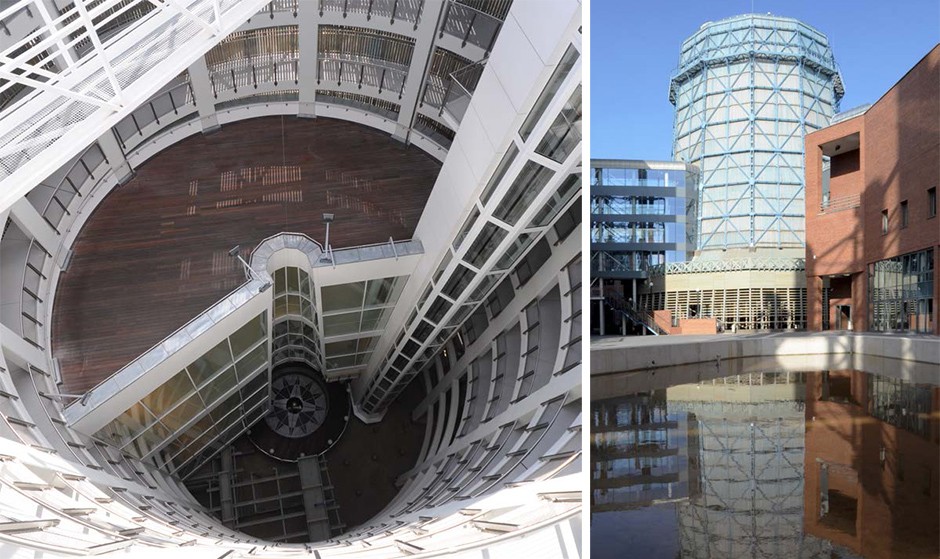
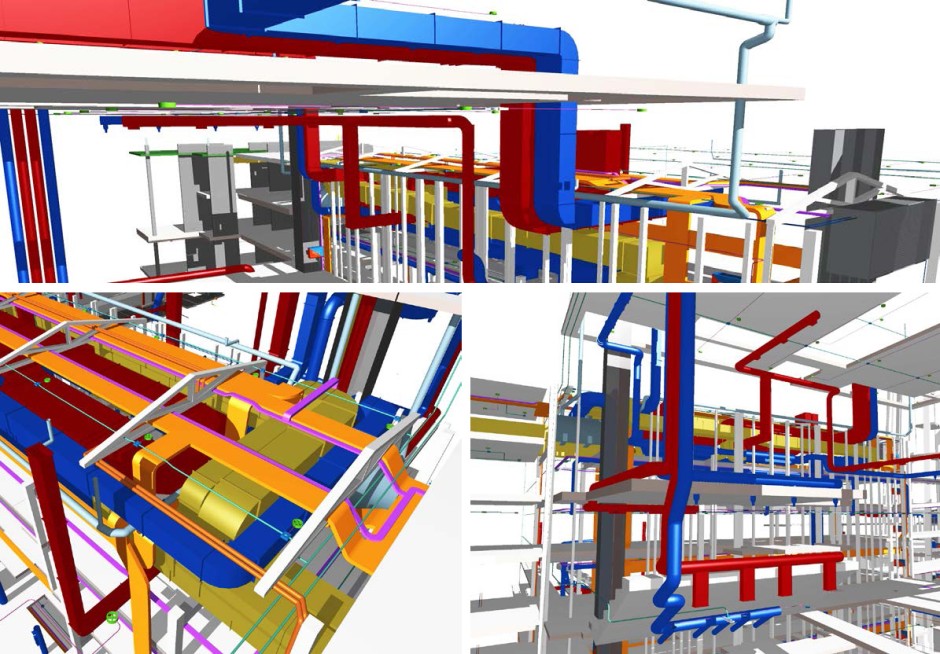
The design as a whole has maintained the size, form and exterior features of the façade. Separation of the latter external installations from the boiler room walls allowed for reestablishing the original form of a building. The design also assumed the recreation of the original height (40,5 meters), of the form, and of the roofing (of wooden planks) of a cooling tower. Its interior will be filled by a building, which will become a keystone of the revitalized complex and it will be topped with an observation deck accessed by a spiral pathway as well as an elevator. A Foucault Pendulum will be suspended inside the cooling tower.
The use of Archicad software to build a 3D model of both the exteriors and interiors of the buildings greatly facilitated the creation of the design for the competition. In the course of the work on the final design, the Archicad 3D models of the complex enabled the verification of design decisions.
In the later stages of work, 3D models were created for the promotion of the entire project. In addition, an Archicad’s MEP Modeler add-on has proved particularly useful. By enabling the creation and editing of installation system models, Archicad helped in the design of collision-free technical installation systems and their coordination with the virtual Archicad 3D model. The use of MEP Modeler significantly improved the design work.
Mirosław Wiśniewski Urban Planning and Architecture Ltd.
Mirosław Wiśniewski – Urbanistyka i Architektura Sp. z o.o. was founded in 1991 as one of the first architectural firms in Łódź, Poland.
The principal designer– Mirosław Wiśniewski (PhD), an architectural engineer, has 45 years of professional experience. Before setting up his own practice he designed a large number of architectural and urban projects in the urban design office in Łódź. He co-designed, with his wife –Weronika Wiśniewska, an architectural engineer, more than 35 distinguished projects – some of them award-winning – in Polish urban and architectural competitions, organized by SARP and TUP (Polish professional associations for architects and urban- planners).
As a professor at the Technical University of Łódź, he has published more than 30 publications on spatial planning, urban planning and architecture in Poland, France, Romania and Italy.
The design team consists of young and creative architects with the professional experiences gained in Poland, Italy and France. For many years, the firm has cooperated with some of the best, experienced structural engineers and other specialists in Łódź.
About Graphisoft
Graphisoft® ignited the BIM revolution in 1984 with Archicad®, the industry first BIM software for architects. Graphisoft continues to lead the industry with innovative solutions such as its revolutionary BIMcloud®, the world’s first real-time BIM collaboration environment; and BIMx®, the world’s leading mobile app for lightweight access to BIM for non-professionals. Graphisoft is part of the Nemetschek Group.
